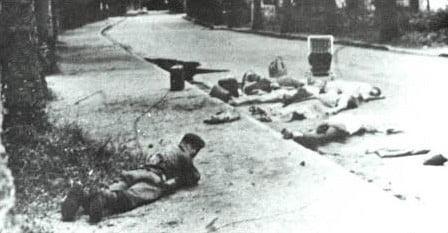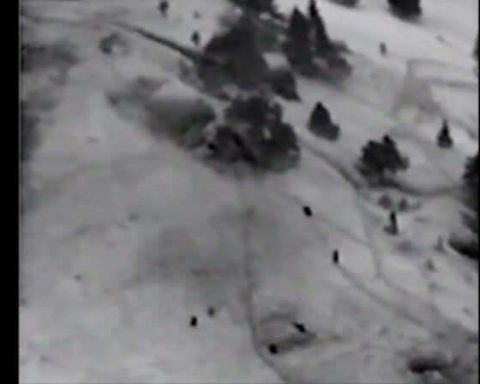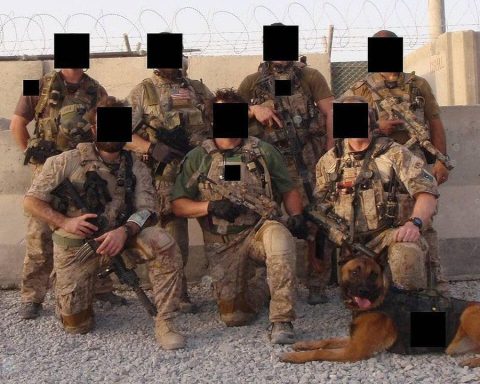In 1964 during the Cold War, Belgian military started operation DRAGON ROUGE (Red Dragon) in order to rescue hostages who had been held in the city of Stanleyville in Congo-Léopoldville (modern-day Kisangani, Democratic Republic of the Congo) for more than three months.
At dawn on November 24, 1964 the hard noise of five four-engine Lockheed C-130 Hercules over the former Belgian colony of Congo signalized that things are going to change. US-operated transport planes had a significant cargo, paratroopers from Belgian Paracommando Regiment which were sent to retrieve hostages held by Communist Simba rebels in Stanleyville.
At the time, Africa was an unstable place, even more so than it is today. The former Belgian Colony of Congo, now known as Zaire, was granted independence in 1960, and almost immediately became the site of chaos. When the crisis ended in early 1964, a new one broke out as Congolese rebels rebelled against the official government backed by the United States.
Preparation
The United States Strike Command sent JTF LEO, a task force made up of a detachment of C-130 Hercules, communications personnel, and 82nd Airborne security team, to Leopoldville in order to help the government in their fight against rebels. The operation was successful and in August 1964 the Congolese alongside a group of white mercenaries led by Major Mike Hoare, was making headway against the Simbas.
In retaliation, rebels started taking hostages of the whites in areas under their control. All abducted victims were transferred to Stanleyville and placed under guard in the Victoria Hotel. At the time, it was estimated that rebels had more than 1,800 Belgian and other European hostages under their control.
While the world watched anxiously, Washington and Brussels were hard at work trying to come up with a rescue plan. Several ideas were considered and discarded, while attempts at negotiating with the rebels failed – no one could be found to negotiate with!
Failed negotiations – operation started
American transport planes transferred Belgian paratroopers to Africa where they have been told that they will strike and carry on a rescue operation in case of failed negotiations. By this time all hopes of negotiation had vanished, and that evening the American and Belgian commanders were told to launch Operation DRAGON ROUGE.
The operation began on November 23, 1964 when five C-130s took off from Kamina, each with 64 Belgian Para commando members (distinguished with Red Berets) in full combat gear seated on the red nylon troop seats in its cargo compartment. Behind the assault force came seven more Hercules, with Chalk 12 configured as a hospital ship. The C-130s flew north at high altitude, then dropped down to treetop altitudes to follow the Congo River as they neared the city of Stanleyville.
The Belgian task force was led by Col. Charles Laurent. On 24 November 1964, five American C-130 Hercules planes spilled paratroopers from the doors on either side of the airplane. Within seconds, around 350 Belgian paratroopers were in the air, then landing on the strip of grass alongside the runway. They had secured the airfield and cleared the runway. Forty-five minutes after he jumped, Col. Laurent reported that the airfield was secure.

Next stop was Victoria Hotel, where paratroopers prevented Simbas from killing most of the 60 hostages and evacuated them via the airfield. Over the next two days over 1,800 American, Belgian and other European civilians were evacuated as well as around 400 Congolese civilians. Almost 200 foreigners and thousands of Congolese were executed by the Simbas before and after the raid.
An American medical missionary, Dr. Paul Carlson, was among those killed during the raid.
Aftermath
For their role in joint US-Belgian operation DRAGON ROUGE, the C-130 Hercules crewmembers received the 1964 MacKay Trophy for the most meritorious flight of the year by USAF aircraft. All of the crewmembers were decorated with the Air Medal, while Captain Mack Secord received the Distinguished Flying Cross.
The end of operation coincided with the arrival of Armée Nationale Congolaise (ANC) and other foreign mercenary units –which likely included the hastily-formed 5th Mechanised Brigade and Mike Hoare’s 5 Commando ANC– at Stanleyville which was quickly captured. It took until the end of the year to completely put down the remaining areas of the Simba rebellion which ended their bloody episode in Congolese history.




